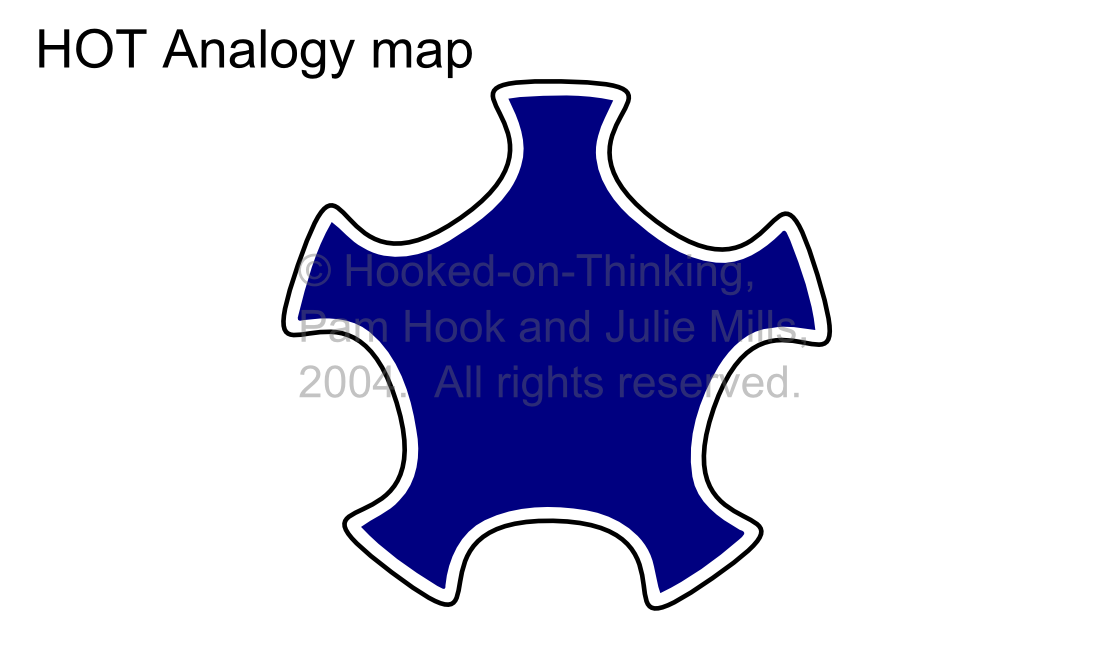HOT SOLO Analogy Map
HOT SOLO Analogy Map, Self-assessment Rubric and Student Use Examples
NOTE: THIS MAP HAS BEEN REPLACED BY THE HookED ANALOGY MAP
What is it?
The HOT SOLO Analogy map and self assessment rubric is used to find similarities between two objects that are normally not alike in structure.
File:HOT Analogy Template 2010.pdf
How do I use it?
1. Align the HOT SOLO Analogy Map and assessment rubric with the learning intention. For example, we are learning to make an analogy for [content] [context].
2. Place an object A onto the map. You can use text, photographs or images for your two objects.
3. List any attributes that describe the object A.
4. Choose one attribute and place it on the map.
5. Brainstorm other objects that share a similar attribute. Think of quirky and unusual objects that share a similar attribute.
6. Choose one object B and place the object and the attribute on the map.
7. Explain the relational factor. E.g.” A is like B with regards to ….”
8. Share the success criteria for analogy in the HOT SOLO analogy rubric.
9. With reference to the success criteria, create an analogy using the completed HOT SOLO analogy map. The analogy can be written, oral or an annotated drawing. This process is iterative and can be repeated whenever new learning occurs enabling the causal explanation statements to be improved.
10. Students self assess/peer assess and seek teacher feedback on their analogies.
11. Students assess their learning outcome for the identified learning intention against the SOLO levels, explain why they have chosen this level of learning outcome for their work (feedback) and suggest where to next steps (feed up).
12. Record this in a student learning log.
HOT SOLO Analogy Self-Assessment Rubric
Student Use Examples
